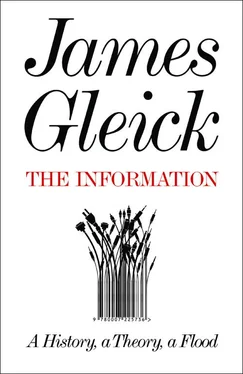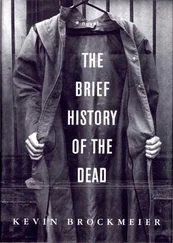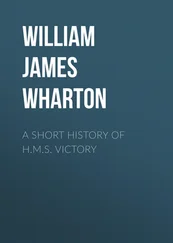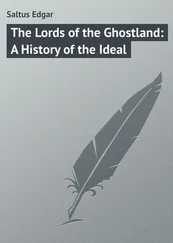When he began his studies, “oral literature” was a common phrase. It is an oxymoron laced with anachronism; the words imply an all-too-unconscious approach to the past by way of the present. Oral literature was generally treated as a variant of writing; this, Ong said, was “rather like thinking of horses as automobiles without wheels.”
You can, of course, undertake to do this. Imagine writing a treatise on horses (for people who have never seen a horse) which starts with the concept not of “horse” but of “automobile,” built on the readers’ direct experience of automobiles. It proceeds to discourse on horses by always referring to them as “wheelless automobiles,” explaining to highly automobilized readers all the points of difference. . . . Instead of wheels, the wheelless automobiles have enlarged toenails called hooves; instead of headlights, eyes; instead of a coat of lacquer, something called hair; instead of gasoline for fuel, hay, and so on. In the end, horses are only what they are not.
When it comes to understanding the preliterate past, we modern folk are hopelessly automobilized. The written word is the mechanism by which we know what we know. It organizes our thought. We may wish to understand the rise of literacy both historically and logically, but history and logic are themselves the products of literate thought.
Writing, as a technology, requires premeditation and special art. Language is not a technology, no matter how well developed and efficacious. It is not best seen as something separate from the mind; it is what the mind does. “Language in fact bears the same relationship to the concept of mind that legislation bears to the concept of parliament,” says Jonathan Miller: “it is a competence forever bodying itself in a series of concrete performances.” Much the same might be said of writing—it is concrete performance—but when the word is instantiated in paper or stone, it takes on a separate existence as artifice. It is a product of tools, and it is a tool. And like many technologies that followed, it thereby inspired immediate detractors.
One unlikely Luddite was also one of the first long-term beneficiaries. Plato (channeling the nonwriter Socrates) warned that this technology meant impoverishment:
For this invention will produce forgetfulness in the minds of those who learn to use it, because they will not practice their memory. Their trust in writing, produced by external characters which are no part of themselves, will discourage the use of their own memory within them. You have invented an elixir not of memory, but of reminding; and you offer your pupils the appearance of wisdom, not true wisdom.
External characters which are no part of themselves —this was the trouble. The written word seemed insincere. Ersatz scratchings on papyrus or clay were far abstracted from the real, the free-flowing sound of language, intimately bound up with thought so as to seem coterminous with it. Writing appeared to draw knowledge away from the person, to place their memories in storage. It also separated the speaker from the listener, by so many miles or years. The deepest consequences of writing, for the individual and for the culture, could hardly have been foreseen, but even Plato could see some of the power of this disconnection. The one speaks to the multitude. The dead speak to the living, the living to the unborn. As McLuhan said, “Two thousand years of manuscript culture lay ahead of the Western world when Plato made this observation.” The power of this first artificial memory was incalculable: to restructure thought, to engender history. It is still incalculable, though one statistic gives a hint: whereas the total vocabulary of any oral language measures a few thousand words, the single language that has been written most widely, English, has a documented vocabulary of well over a million words, a corpus that grows by thousands of words a year. These words do not exist only in the present. Each word has a provenance and a history that melts into its present life.
With words we begin to leave traces behind us like breadcrumbs: memories in symbols for others to follow. Ants deploy their pheromones, trails of chemical information; Theseus unwound Ariadne’s thread. Now people leave paper trails. Writing comes into being to retain information across time and across space. Before writing, communication is evanescent and local; sounds carry a few yards and fade to oblivion. The evanescence of the spoken word went without saying. So fleeting was speech that the rare phenomenon of the echo, a sound heard once and then again, seemed a sort of magic. “This miraculous rebounding of the voice, the Greeks have a pretty name for, and call it Echo,” wrote Pliny. “The spoken symbol,” as Samuel Butler observed, “perishes instantly without material trace, and if it lives at all does so only in the minds of those who heard it.” Butler was able to formulate this truth just as it was being falsified for the first time, at the end of the nineteenth century, by the arrival of the electric technologies for capturing speech. It was precisely because it was no longer completely true that it could be clearly seen. Butler completed the distinction: “The written symbol extends infinitely, as regards time and space, the range within which one mind can communicate with another; it gives the writer’s mind a life limited by the duration of ink, paper, and readers, as against that of his flesh and blood body.”
But the new channel does more than extend the previous channel. It enables reuse and “re-collection”—new modes. It permits whole new architectures of information. Among them are history, law, business, mathematics, and logic. Apart from their content, these categories represent new techniques. The power lies not just in the knowledge, preserved and passed forward, valuable as it is, but in the methodology: encoded visual indications, the act of transference, substituting signs for things. And then, later, signs for signs.
Paleolithic people began at least 30,000 years ago to scratch and paint shapes that recalled to the eye images of horses, fishes, and hunters. These signs in clay and on cave walls served purposes of art or magic, and historians are loath to call them writing, but they began the recording of mental states in external media. In another way, knots in cords and notches in sticks served as aids to memory. These could be carried as messages. Marks in pottery and masonry could signify ownership. Marks, images, pictographs, petroglyphs—as these forms grew stylized, conventional, and thus increasingly abstract, they approached what we understand as writing, but one more transition was crucial, from the representation of things to the representation of spoken language: that is, representation twice removed. There is a progression from pictographic, writing the picture; to ideographic, writing the idea; and then logographic, writing the word .
Chinese script began this transition between 4,500 and 8,000 years ago: signs that began as pictures came to represent meaningful units of sound. Because the basic unit was the word, thousands of distinct symbols were required. This is efficient in one way, inefficient in another. Chinese unifies an array of distinct spoken languages: people who cannot speak to one another can write to one another. It employs at least fifty thousand symbols, about six thousand commonly used and known to most literate Chinese. In swift diagrammatic strokes they encode multidimensional semantic relationships. One device is simple repetition: tree + tree + tree = forest; more abstractly, sun + moon = brightness and east + east = everywhere . The process of compounding creates surprises: grain + knife = profit; hand + eye = look . Characters can be transformed in meaning by reorienting their elements: child to childbirth and man to corpse . Some elements are phonetic; some even punning. The entirety is the richest and most complex writing system that humanity has ever evolved. Considering scripts in terms of how many symbols are required and how much meaning each individual symbol conveys, Chinese thus became an extreme case: the largest set of symbols, and the most meaningful individually. Writing systems could take alternative paths: fewer symbols, each carrying less information. An intermediate stage is the syllabary, a phonetic writing system using individual characters to represent syllables, which may or may not be meaningful. A few hundred characters can serve a language.
Читать дальше











